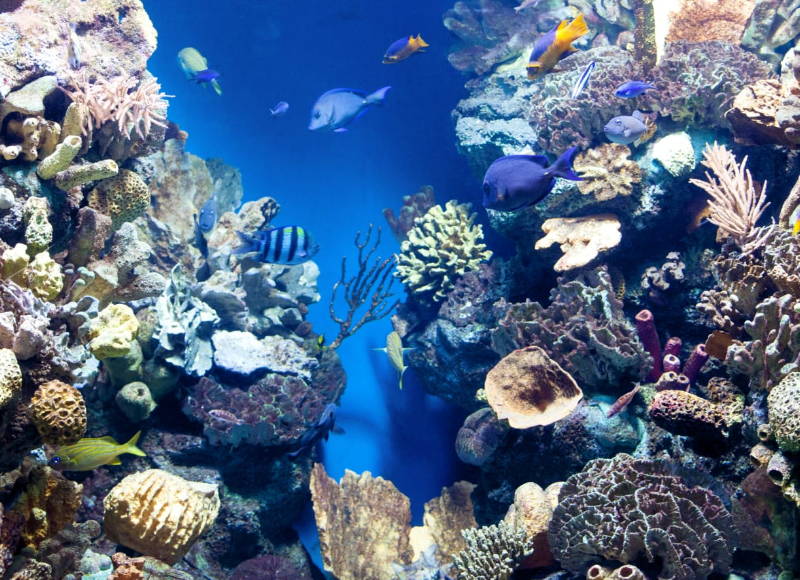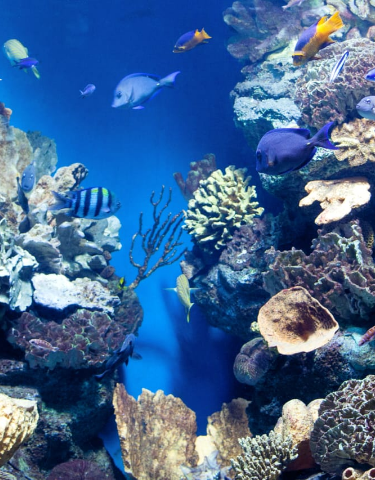In the shimmering shallows and deep-blue contours of our planet’s oceans lie some of its most vibrant and ancient ecosystems: coral reefs. Once called the “rainforests of the sea,” these underwater structures harbor immense biodiversity, protect coastlines, and sustain human livelihoods. And yet, as the 21st century accelerates, reefs are under siege from climate risks, overuse, and neglect. This article takes a futuristic, risk-based lens to examine (a) the current threats to coral reefs globally, (b) why their protection is critical for ecological, societal, and economic resilience, and (c) how countries like Colombia and others are pioneering new approaches — and what the world must do if reef futures are to survive.
1. The Current Risks: A World Bleaching
Identifying risks to coral reefs globally allows for early interventions that can prevent permanent loss or degradation.
1.1. The Fourth Global Bleaching Event: Unprecedented Reach
From 2023 through 2025, the world is experiencing its fourth global coral bleaching event, the most widespread yet. NOAA’s satellite-based monitoring shows that 84.4 % of the world’s coral reef areas have been under bleaching-level heat stress in that period. Mass bleaching events have been documented in at least 83 nations and territories making coral reef restoration an imperative.
Bleaching is not merely cosmetic whiteness. When corals lose their symbiotic algae (zooxanthellae), they lose their primary energy source and become vulnerable to disease, reduced growth, or mortality. The frequency, intensity, and spatial scale of bleaching are accelerating, giving reefs less time to recover between stress events.
1.2. Ocean Acidification, Sea-Level Rise, and Thermal Stress
As atmospheric CO₂ increases, the ocean absorbs much of it — lowering pH and reducing carbonate ion availability, which impairs corals’ ability to build calcium carbonate skeletons. Simultaneously, rising sea levels and altered light regimes can affect growth zones and reef zonation.
Thermal anomalies are also becoming broader in timing (longer-season heat), amplifying stress durations. Some reefs that were once “thermal refugia” are losing that buffer.
1.3. Local and Cumulative Stressors: Pollution, Overfishing, Coastal Development
While climate is a dominant threat, local pressures exacerbate reef decline:
- Land-based pollution & sedimentation: Runoff from agriculture, urbanization, and deforestation brings nutrients and sediments that smother corals and encourage algae overgrowth.
- Overfishing and destructive fishing techniques: Removing herbivorous fish or using cyanide/blast fishing disrupts ecological balance, facilitating algal overgrowth that competes with corals.
- Coastal infrastructure & dredging: Marina development, port expansion, dredging projects damage reef substrates, change hydrodynamics, and worsen siltation.
- Tourism pressure: Anchoring, unregulated diving/snorkeling, and physical contact can mechanically damage coral structures.
The compounded effect is that many reefs are under “multiple stressor syndrome,” where resilience is severely compromised.
1.4. Ecosystem Collapse Risk & Tipping Points
As coral cover declines and is replaced by algae or barren rock, the ecological functions of reefs begin to collapse. Losses in structural complexity reduce habitats for reef fish, invertebrates, and cryptic species. For many reefs, the risks are no longer linear decline but nonlinear tipping: once certain thresholds are crossed, recovery becomes extremely unlikely.
Some forecasts suggest that if current trajectories of emissions and local stress continue, 70–90 % of reef-building corals could vanish by mid- to late century.
2.Why Protect Coral Reefs: Stakes for Life, Land, and People
2.1. Biodiversity and Marine Life Support
Though covering less than 1 % of the ocean floor, coral reef ecosystems support up to 25 % of marine species by providing nursery grounds, feeding habitats, and ecological corridors. Their loss would cascade through marine food webs, reducing fish stocks and eroding genetic reservoirs.
2.2. Coastal Protection & Climate Buffering
Reefs act as natural breakwaters, dissipating wave energy and reducing environmental risks such as coastal erosion and flooding. In many places, reefs reduce wave energy by 50–90 %. Their degradation leaves coastal communities more vulnerable to storms, sea-level rise, and extreme weather.
2.3. Livelihoods, Food Security & Tourism
Millions of people depend directly on reef-associated fisheries for protein, income, and livelihoods. Reef-based tourism also constitutes a multi-billion-dollar global industry. The degradation of reefs threatens these economic pillars, especially for island and coastal nations.
2.4. Cultural, Identity & Aesthetic Value
For many coastal and indigenous communities, reefs hold cultural, spiritual, and heritage significance. They shape coastal identities and serve as natural classrooms. The aesthetic beauty and wonder of reefs also inspire science, art, and human connection to nature.
2.5. Resilience & Adaptation Value
Healthy, diverse reefs are more likely to adapt to ongoing climate change. Protecting reefs is not just conservation — it is a strategy for natural resilience: maintaining systems that can respond, recover, and evolve under stress rather than collapse.
In short, protecting reefs is not optional. It is foundational to marine biodiversity, human well-being, climate resilience, and the future of coastlines and oceans.
3. Colombia’s Coral Strategy: A Case Study in Action
Colombia, straddling both Caribbean and Pacific coasts, holds significant coral resources. Its efforts illustrate both the promise and complexity of reef protection in a developing nation context.
3.1. Marine Protected Areas & Biosphere Reserves
Colombia’s Seaflower Biosphere Reserve, centered around the archipelago of San Andrés, Providencia, and Santa Catalina, contains about 76 % of the country’s coral reefs. It is part of national marine protected area (MPA) systems.
In 2025, Colombia announced the establishment of a new MPA in the Caribbean Sea, encompassing the remote coral reefs of Serranilla and Bajo Nuevo, covering roughly 3,800 km². This move aims to safeguard biodiversity, threatened species, and reef integrity.
Colombia also applies its national parks system to reef protection. For example, the Rosario and San Bernardo Coral National Natural Park protects marine ecosystems including coral reefs at depths from 1 to 30 m.
3.2. Coral Restoration & Innovation
Colombia is undertaking ambitious reef restoration efforts. Conservation International Colombia and the Ministry of Environment, working with local partners, aim to restore 1 million corals in Colombia — the largest effort of its kind in the Americas. This goal can be achieved by having a sound financial risk management plan in place to manage the allocation of funds towards conservation efforts.
In San Andrés, a hybrid green-gray reef barrier project combines natural coral restoration with engineered structures to protect coastal communities and boost reef resilience.
The Fi Wi Riif Programme works within the Seaflower Reserve to recover resilient reef sites, support coastal communities, and apply innovative reef health and restoration technologies.
3.3. Community Engagement, Legal Protection & Advocacy
Local NGOs like Fundación Calipso have engaged coastal communities for years in reef restoration, biodiversity recovery, and sustainable income alternatives (e.g., ecotourism).
Citizen initiatives like “Salvemos Varadero” in Cartagena have pushed for legal recognition to protect the Varadero reef (a reef surviving amid heavy pollution in Cartagena Bay). The reef is threatened by port dredging proposals.
Hotels in Islas del Rosario are collaborating on reef protection — diversifying incentives, improving wastewater treatment, and supporting reef restoration to maintain tourism viability.
Still, challenges remain: funding, governance capacity, enforcement, balancing local livelihoods with restrictions, and scaling effective restoration across broader reef territories.
4. Future-Proof Strategies: What Must the World Do?
To safeguard reefs against accelerating risk, we need a portfolio of risk mitigation strategies— from climate action to frontier technologies, policy reform, community agency, and global partnerships.
4.1. Aggressive Climate Mitigation & Ocean Health Policies
- Rapid decarbonization is foundational. No reef will survive unchecked warming.
- Carbon removal, ocean alkalinity restoration, and localized cooling interventions (e.g. shading, upwelling pumps) could buy time in vulnerable reef zones.
- Governments must integrate reef health into national climate adaptation plans, coastal zone policies, and spatial planning.
4.2. Scaling Reef Restoration with Technology & Automation
Manual coral gardening and transplantation are resource-intensive and low scale. The future demands automation and AI to reduce coral bleaching risks:
- New research presents AI-driven coral reseeding devices that autonomously classify substrate, release coral larvae, and scale restoration operations on the Great Barrier Reef.
- Robotic systems (autonomous surface vehicles) can map, plant, and monitor at scale, increasing coverage by 20–30× relative to manual methods.
- Drone + underwater imagery models (multi-scale deep learning) allow wide-area reef health mapping to prioritize intervention zones.
- Genetic and assisted evolution techniques: breeding coral strains that tolerate heat, acidification, or disease; coral probiotics and microbiome engineering.
4.3. Resilient Reef Prioritization & Adaptive Protection
Given limited resources, focus should be on High Integrity Climate-Resilient Coral Reefs (HICOR) — reefs that already show high coral cover, biodiversity, and recovery capacity. WCS’s 2025–2030 strategy centers on protecting such reefs.
Eleven governments recently pledged to protect climate-resilient reefs jointly.
Conservation planning should emphasize connectivity, refugia, and reef corridors, not isolated patches.
4.4. Expand and Enforce Marine Protected Areas (MPAs)
- Target achieving 30 % of global oceans under strong protection by 2030 (“30×30” goal) with reef zones as priority.
- Countries must upgrade existing MPAs to high-protection status, banning extractive activities, dredging, and harmful tourism. Australia has pledged to declare nearly one-third of its ocean highly protected by 2030.
- Community-based marine reserves co-managed with fishers often show stronger compliance and sustainability.
4.5. Local Stressor Management & Pollution Control
- Implement land-use controls: buffer zones, sediment control, wastewater treatment, agrochemical controls to reduce nutrient/sediment runoff.
- Regulate and ban destructive fishing practices (cyanide, blasts, bottom trawling) near reefs.
- Manage tourism impacts: restrict anchor zones, enforce “no touch” rules, provide mooring buoys, limit diver numbers.
- Use economic tools: payments for ecosystem services, reef health-based incentives.
4.6. Community & Indigenous Governance
- Empower coastal and Indigenous communities as guardians, stewards, and co-managers of reef zones. Their knowledge and vested interest are vital.
- Provide alternative livelihood pathways (ecotourism, reef ecotechnology, sustainable aquaculture) to reduce pressure on reefs.
- Restore social norms of stewardship, marine ethics, and knowledge transmission.
4.7. Monitoring, Metrics & Early Warning
- Standardize metrics of reef health (coral cover, growth rates, species diversity, fish biomass).
- Use AI-augmented remote sensing, multisensor data fusion (satellite, drone, underwater) for near real-time monitoring.
- Establish reef stress early warning systems (thermal anomalies, pollutant spikes).
- Independent auditing, adaptive management, and feedback loops.
4.8. Finance, Partnerships & Policy Levers
- Innovative financial instruments: debt-for-nature swaps (e.g. Indonesia–US coral reef swap) tied to reef restoration commitments.
- Green/blue bonds, reef health-linked insurance, conservation trust funds.
- International partnerships (global reef funds, UN, philanthropic capital) to support capacity-constrained nations.
- Policy integration: reef protection must be integrated across environment, fisheries, tourism, coastal development, and climate ministries.
- Global governance: stronger treaties (e.g. high seas biodiversity treaty), enforceable standards, coral reef Pacts.
5. Risks, Barriers & Future Challenges
- Funding and cost scalability: Advanced robotics and AI come with high cost; many reef nations lack resources.
- Governance & enforcement gaps: MPAs often exist on paper; illegal fishing, weak policing, and corruption erode impact.
- Technological lock-in or ecological mismatch: Interventions (e.g. engineered reefs, assisted evolution) may create unforeseen side effects or fail under complex stressors.
- Equity and justice: Imposing strict protection may harm local livelihoods unless alternative pathways are equipped.
- Changing baselines and shifting species: As climate warms, new species assemblages may emerge; rigid conservation frameworks may fail to adapt.
- Time lag and cumulative inertia: Many reefs are already degraded; recovery may take decades, and some losses may be irreversible.
- Climate overshoot: If warming far exceeds 2 °C, many strategies may be insufficient to save large swaths of reef ecosystems.
Thus, the reef’s future is one of urgency, innovation, humility, and collaboration.
6. Casting a Vision: Reef Futures by 2050
Imagine a mid-21st-century ocean — not pristine everywhere, but resilient in pockets, restored by human–nature synergy, and under continuous care:
- AI-guided drone fleets map reef health globally; restoration robots reseed corals at scale in priority zones.
- Coral strains with enhanced thermal and acidification tolerance form the backbone of reef recovery.
- Coastal communities run reef-based ecotourism, guided snorkeling, and reef schools, sustaining livelihoods while protecting nature.
- Protected reef corridors link refugia zones, promoting gene flow and species migration.
- National and continental reef health indices track progress — akin to economic or health indicators — with financial incentives tied to improvement.
- Global reef disaster relief funds activate mobile restoration teams to respond to bleaching pulses.
- Reef literacy is taught from childhood; international “Reef Day” celebrations galvanize citizens, scientists, and artists.
This vision is not utopian — it is plausible if we act now with ambition, cooperation, and wisdom.
7. Conclusion: A Call to Reef Action
Coral reefs are not relics of the past; they are living frontiers of biodiversity, climate resilience, and human-nature interdependence. Their decline is one of the defining environmental crises of our age. But the path to their recovery is open, if we combine bold climate action, environmental risk assessment, technological innovation, community stewardship, and global solidarity.
Colombia’s efforts — from new marine reserves to reef restoration and community partnerships — are a testament: even in challenging contexts, practical progress is possible by minimising marine risks. However, we cannot leave the burden to a few frontlines. The future of reefs demands that every coastal nation, every scientific institution, every marine policy player, and every citizen play a role.
The reef’s future is not yet lost — but time is short. Let us choose to invest, to protect, to innovate, and to safeguard these underwater kingdoms for our generation and the generations yet to come.
FAQs
1.What is reef restoration and why is it important?
Reef restoration is the active process of helping damaged coral reefs recover and rebuild. It involves interventions to speed up their natural recovery, especially important as climate change and repeated bleaching events limit the reefs’ ability to recover on their own.
Reef restoration is important as reefs are under siege from climate change, pollution, overuse, and neglect. Reef protection is critical for ecological, societal, and economic resilience.
2.What are the main risks to coral reefs?
Coral reefs face the following risks –
- Bleaching-level heat stress. When corals lose their symbiotic algae, they lose their primary energy source and become vulnerable to disease and reduced growth.
- Climate and environment risks such as ocean acidification, rising sea levels and altered light regimes can affect growth zones and reef zonation. Thermal anomalies and emissions result in the resilience of reefs getting compromised.
- Local pressures such as land-based pollution, sedimentation, overfishing, coastal infrastructure projects and tourism pressures exacerbate reef decline.
- As coral cover declines and is replaced by algae or barren rock, the ecological functions of reefs begin to collapse. This raises ecosystem collapse risk.
3.What are five causes of ocean acidification?
Ocean acidification is caused by –
- Burning fossil fuels (like coal, oil, and gas) that release large amounts of carbon dioxide into the air.
- Deforestation reduces the number of trees that can absorb carbon dioxide, and when trees are cut or burnt, more carbon dioxide enters the atmosphere.
- Industrial activities, such as cement production and energy generation, add extra carbon dioxide to the atmosphere.
- Agricultural runoff and waste (including fertilizers and sewage) that can trigger chemical reactions in the water, making it more acidic.
- Natural processes like volcanic eruptions and decomposition of organic matter on the seabed that also release carbon dioxide.
As atmospheric CO₂ increases, the ocean absorbs much of it — lowering pH and reducing carbonate ion availability, which impairs corals’ ability to build calcium carbonate skeletons. Coral strains with enhanced thermal and acidification tolerance form the backbone of reef recovery.















